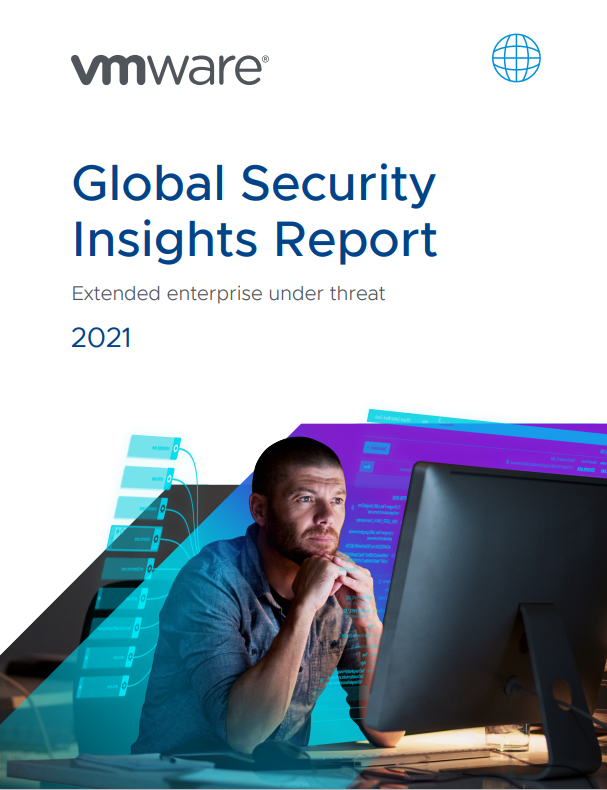Researchers disclose top flaws abused by ransomware gangs
Easy-to-follow list may give organizations time to prepare for ransomware attacks


Security researchers have prepared a list of flaws commonly used by cyber crime gangs in ransomware attacks to infiltrate victim’s networks.
Last weekend, Allan Liska, a member of Recorded Future's CSIRT, tweeted the call to action to fellow security professionals. He asked his followers to send in the vulnerabilities they often see used to gain access to networks.
In the space of day, various contributors listed security flaws found in several products from hardware and software vendors. Pancek3, another researcher on Twitter, created and later tweeted out, a simple diagram of flaws commonly used in ransomware attacks that should enable organizations to prioritize points of their infrastructure that need defending.
Among the flaws used by ransomware attacks are ones found in Pulse SecureVPN, Citrix, Microsoft Exchange, Fortinet, and SonicWall, to name a few.
Liska and others’ efforts over the last few days come after various government and private company initiatives to fend off the growing surge in ransomware attacks.
Last month, CISA, Microsoft, Google Cloud, and AWS, launched a Joint Cyber Defense Collaborative (JCDC), to guard critical infrastructure against ransomware.
RELATED RESOURCE

Earlier this year, CISA published a new module for its Cyber Security Evaluation Tool (CSET) to enable organizations to assess their security posture concerning ransomware attacks.
Get the ITPro daily newsletter
Sign up today and you will receive a free copy of our Future Focus 2025 report - the leading guidance on AI, cybersecurity and other IT challenges as per 700+ senior executives
Eoin Keary, CEO and founder of Edgescan told IT Pro that what is important to note is a significant number of the vulnerabilities are two to three years old.
“Industrialized cyber crime is not leveraging ‘zero day’ payloads or exploits, but rather focusing on the ‘old reliables.’ This brings me to the conclusion that we have a lot of work to do in terms of both continuous visibility, vulnerability detection and mitigation of discovered vulnerabilities, such as good patching cadence. The days of singular point-in-time penetration tests are over, and organizations need to move towards a more continuous model,” he said
Keary added: "Many ransomware attacks begin with a human-led breach followed by pivoting across the network and exploitation. It is also necessary to discuss ‘internal’ or non-public cyber security postures.”
“Prevention is important, but we also need more focus on resilience. Resilience can mean good vulnerability management, network segmentation, monitoring, and visibility as a start. In addition, simple activities like frequent backups can reduce the impact of a successful ransomware attack.”
Rene Millman is a freelance writer and broadcaster who covers cybersecurity, AI, IoT, and the cloud. He also works as a contributing analyst at GigaOm and has previously worked as an analyst for Gartner covering the infrastructure market. He has made numerous television appearances to give his views and expertise on technology trends and companies that affect and shape our lives. You can follow Rene Millman on Twitter.
-
 Should AI PCs be part of your next hardware refresh?
Should AI PCs be part of your next hardware refresh?AI PCs are fast becoming a business staple and a surefire way to future-proof your business
By Bobby Hellard Published
-
 Westcon-Comstor and Vectra AI launch brace of new channel initiatives
Westcon-Comstor and Vectra AI launch brace of new channel initiativesNews Westcon-Comstor and Vectra AI have announced the launch of two new channel growth initiatives focused on the managed security service provider (MSSP) space and AWS Marketplace.
By Daniel Todd Published
-
 ‘Phishing kits are a force multiplier': Cheap cyber crime kits can be bought on the dark web for less than $25 – and experts warn it’s lowering the barrier of entry for amateur hackers
‘Phishing kits are a force multiplier': Cheap cyber crime kits can be bought on the dark web for less than $25 – and experts warn it’s lowering the barrier of entry for amateur hackersNews Research from NordVPN shows phishing kits are now widely available on the dark web and via messaging apps like Telegram, and are often selling for less than $25.
By Emma Woollacott Published
-
 Healthcare systems are rife with exploits — and ransomware gangs have noticed
Healthcare systems are rife with exploits — and ransomware gangs have noticedNews Nearly nine-in-ten healthcare organizations have medical devices that are vulnerable to exploits, and ransomware groups are taking notice.
By Nicole Kobie Published
-
 Alleged LockBit developer extradited to the US
Alleged LockBit developer extradited to the USNews A Russian-Israeli man has been extradited to the US amid accusations of being a key LockBit ransomware developer.
By Emma Woollacott Published
-
 February was the worst month on record for ransomware attacks – and one threat group had a field day
February was the worst month on record for ransomware attacks – and one threat group had a field dayNews February 2025 was the worst month on record for the number of ransomware attacks, according to new research from Bitdefender.
By Emma Woollacott Published
-
 CISA issues warning over Medusa ransomware after 300 victims from critical sectors impacted
CISA issues warning over Medusa ransomware after 300 victims from critical sectors impactedNews The Medusa ransomware as a Service operation compromised twice as many organizations at the start of 2025 compared to 2024
By Solomon Klappholz Published
-
 Warning issued over prolific 'Ghost' ransomware group
Warning issued over prolific 'Ghost' ransomware groupNews The Ghost ransomware group is known to act fast and exploit vulnerabilities in public-facing appliances
By Solomon Klappholz Published
-
 The Zservers takedown is another big win for law enforcement
The Zservers takedown is another big win for law enforcementNews LockBit has been dealt another blow by law enforcement after Dutch police took 127 of its servers offline
By Solomon Klappholz Published
-
 There’s a new ransomware player on the scene: the ‘BlackLock’ group has become one of the most prolific operators in the cyber crime industry – and researchers warn it’s only going to get worse for potential victims
There’s a new ransomware player on the scene: the ‘BlackLock’ group has become one of the most prolific operators in the cyber crime industry – and researchers warn it’s only going to get worse for potential victimsNews Security experts have warned the BlackLock group could become the most active ransomware operator in 2025
By Solomon Klappholz Published